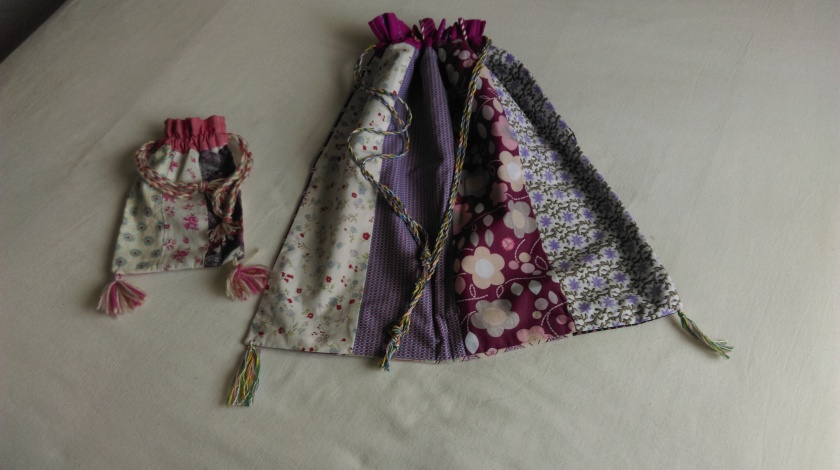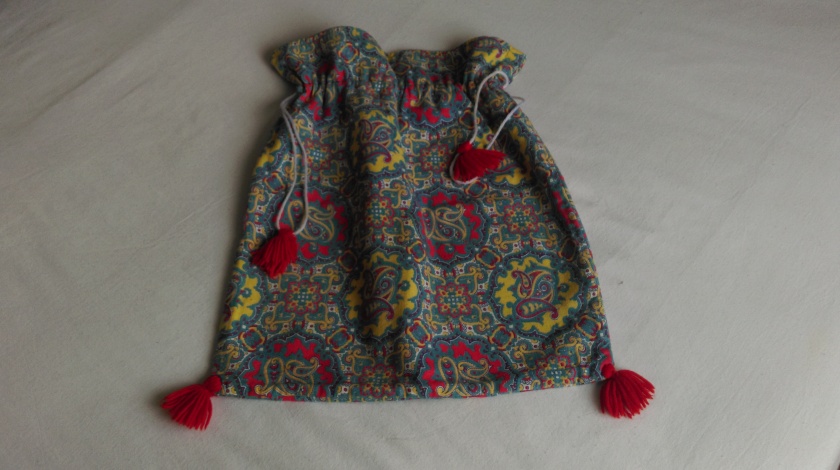
Not to be confused with the Spanish word, which can mean plastic bag, sack, money or even jail depending on which Spanish speaking country you’re in.
In Portugal, a talego is a fabric “scrap-bag”. It’s a bag made from old bits of fabric, all different, sewn in a patch like pattern. It has a lining, a fastening cord usually made of fabric but it can be a string made of wool or another material, and may also have woolen pom-poms.
The traditional talego was like a mosaic, or a story-telling book with each bit of fabric coming from an old nightie, a faded shirt or a worn out dress. Today’s talegos are more likely to be made from new material.
In the olden days the talego was made mainly to keep and carry food – bread, tea, aromatic herbs, grains and peas. Some say a bride was meant to keep a couple in her “enxoval” as a good luck token.
In modern times the talego is not just to carry food in: it’s used to carry mobile phones, to keep jewellery in or to use, as I do, as a go-about-the-village handbag (I keep my purse, mobile, house keys, sunglasses and my lip balm in mine). When I carry it I feel like I am carrying a little bit of Alentejo with me.
In Alentejo the talego is mainly associated with the bag to put your bread though not many people use it to go buy their bread. However, I’m glad to say, it’s enjoying a revival in many restaurants where the bread basket is being replaced by the bread talego. I love it. It’s like having a bit of an old tradition having dinner with you. The fabric is meant to keep the bread fresher and when we are talking about the best bread in the world – well, you can’t put it in just any bag!
See below some of the talegos in my collection.





Os talegos eram também usados para guardar farinha.
LikeLike
Verdade. Obrigada pela informação 🙂
LikeLike